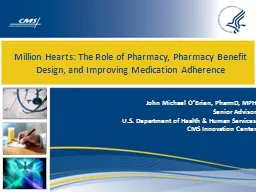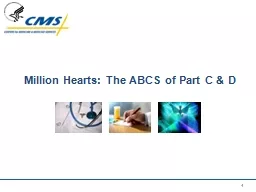PPT-Million Hearts: The Role of Pharmacy, Pharmacy Benefit Desi
Author : marina-yarberry | Published Date : 2016-05-18
John Michael OBrien PharmD MPH Senior Advisor US Department of Health amp Human Services CMS Innovation Center Objectives 2 Describe the Million Hearts initiative
Presentation Embed Code
Download Presentation
Download Presentation The PPT/PDF document "Million Hearts: The Role of Pharmacy, Ph..." is the property of its rightful owner. Permission is granted to download and print the materials on this website for personal, non-commercial use only, and to display it on your personal computer provided you do not modify the materials and that you retain all copyright notices contained in the materials. By downloading content from our website, you accept the terms of this agreement.
Million Hearts: The Role of Pharmacy, Pharmacy Benefit Desi: Transcript
Download Rules Of Document
"Million Hearts: The Role of Pharmacy, Pharmacy Benefit Desi"The content belongs to its owner. You may download and print it for personal use, without modification, and keep all copyright notices. By downloading, you agree to these terms.
Related Documents

